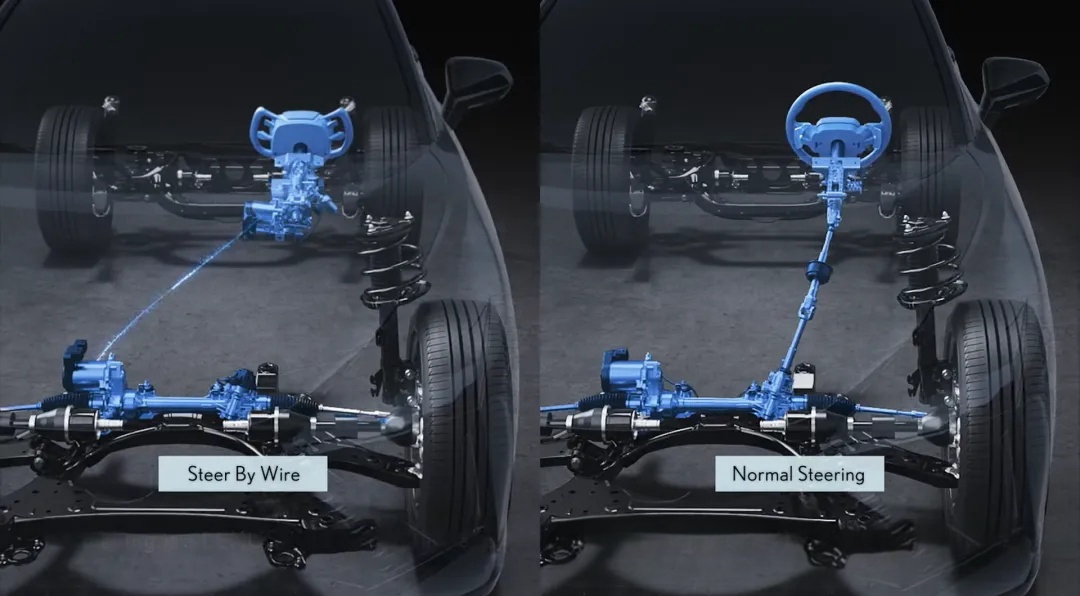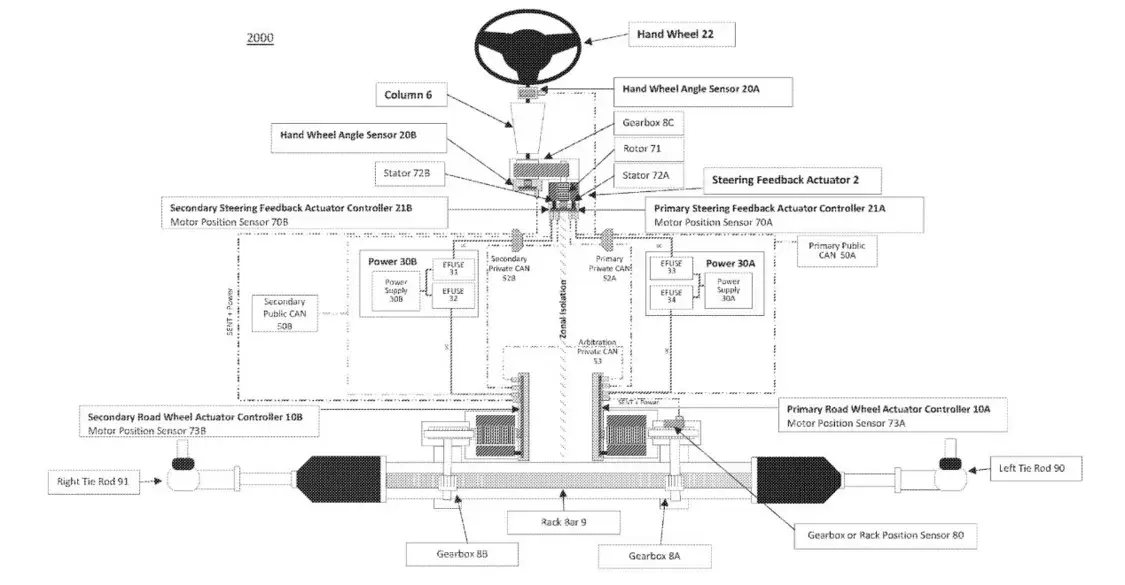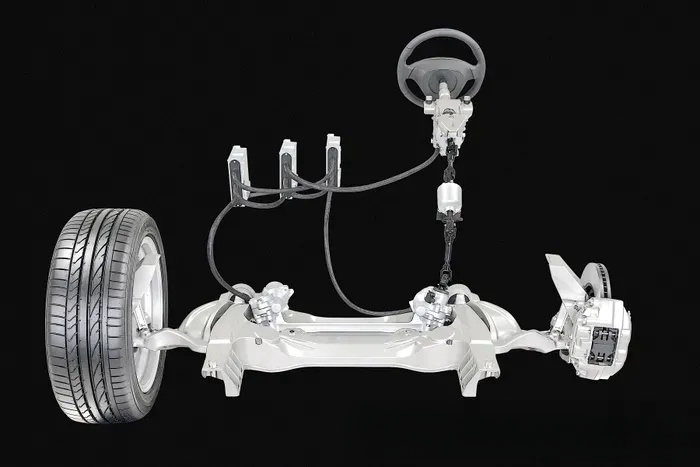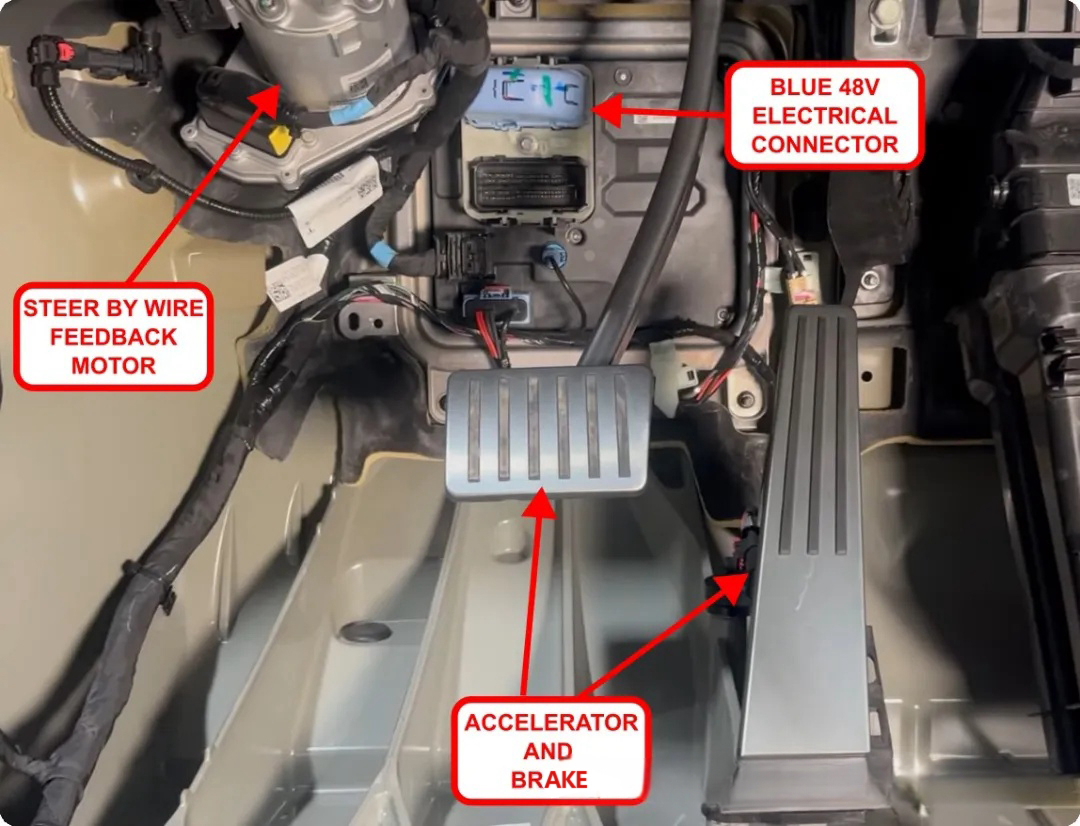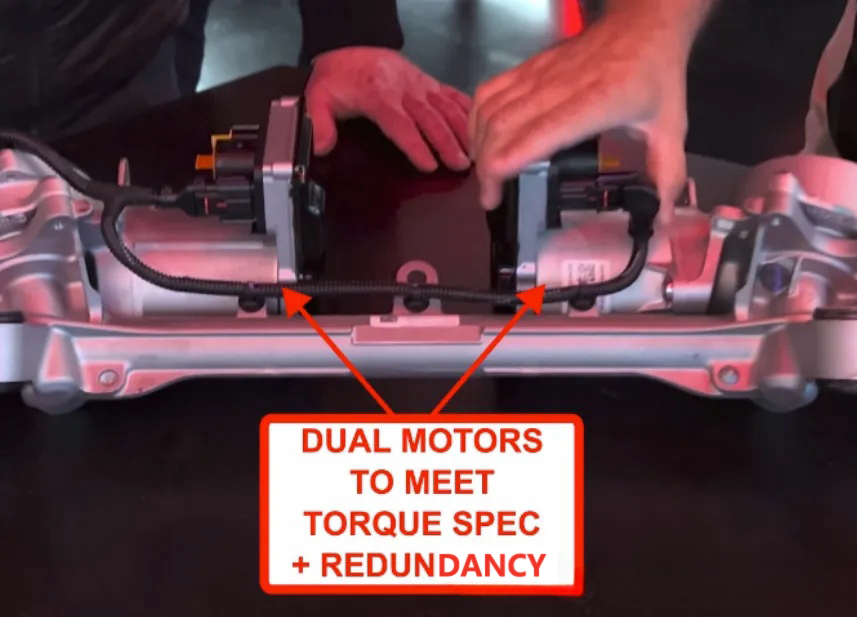Steering-By-Wire
Cybertruck uses wire-controlled rotation to replace the traditional vehicle mechanical rotation method, making the control more perfect. This is also a necessary step to move into high-end intelligent driving.
What is a steer-by-wire system? Simply put, the steer-by-wire system completely cancels the physical connection between the steering wheel and the wheel and uses electrical signals to control the wheel steering.
The steer-by-wire system not only has all the advantages of the traditional mechanical steering system but also can achieve angular transmission characteristics that are difficult to achieve with mechanical systems Optimization.
The steer-by-wire system is not a new technology. Various OEMs have developed this technology a long time ago, including Toyota, Volkswagen, Great Wall, BYD, NIO, etc., as well as the world-renowned Tier 1 Bosch, Continental, and ZF are developing and implementing steer-by-wire systems, but only Tesla’s Cybertruck has been put into mass production in the true sense.
Therefore, the subsequent performance of Cybertruck is very market-leading. At the same time, this technology is also the core technology of “sliding chassis”, so its subsequent batch status is very meaningful.
Although steer-by-wire technology can eliminate the original bulkier transmission mechanism compared to traditional technology and can make the vehicle lighter (light means low cost and long endurance) and lower cost, electrification transmits control through signals. If something goes wrong, the consequences will be very serious. Therefore, when this technology was first used on aviation aircraft, it adopted a double redundant design for double insurance.
Steer-by-wire technology is currently widely used in vehicles, mainly in rear-wheel drive, and is rarely used in front-wheel drive. The main reason is that this technology cannot have any problems, and electrical signal failures can be caused by many aspects, such as battery power outages the signal delay being lost, etc.
To prevent the battery from suddenly running out of power, Cybertruck not only uses a 48V battery system to power the motor on the left side of the picture below but also connects to high-voltage power. There are also 2 backup batteries to ensure that the battery is not powered on, and it is also a double redundant design.
The Cybertruck’s steer-by-wire system uses two motors, each capable of producing approximately 50-60% of maximum torque during low-speed parking conditions. If one fails, there is still one motor available to provide redundancy. The same motor (only one) is used to drive the rear steering system. This motor can give the driver a feeling of simulated feedback.,this feedback is very important. Without this feedback, the driver is less able to perceive the steering of the wheel. situation, and it can also transmit tire and ground data to the analysis unit to provide a better driving experience. For example, when you turn the direction, it can maintain the best grip between the tires and the ground.
Since electrical signals have replaced traditional mechanical control, the effectiveness and timeliness of signal transmission are very important. Cybertruc uses Ethernet communication to replace traditional CAN communication. It has a Gigabit Ethernet system to move data, which can meet the needs of High-speed communication, the data network has a latency of only half a millisecond, making it ideal for turn signals, and it also provides sufficient bandwidth to allow various controllers to communicate in real-time.
Ethernet has a higher bandwidth than CAN communication. The whole vehicle can share a daisy chain. Using POE technology, the Ethernet interface can be directly powered without a separate set of low-voltage power supplies, which can greatly reduce the cost of the wiring harness. This technology will also be rapidly commercialized and implemented with the rapid commercialization and implementation of in-vehicle Ethernet and future smart driving.
Summarize:
Although the steering-by-wire technology is not very advanced, it has been used in batches on vehicles. At least the previous Lexus encountered many problems when it tried to catch crabs.
This kind of direct elimination of traditional sensor mechanical control through electrical signals, although it is high quality and low price, can also allow drivers to have a better driving experience, but the most basic requirement for vehicles is safety. There are many levels of failure factors in electrical signals.
Promoting technological progress requires market verification and takes time. If this technology becomes very popular in the future, If it is stable, the integrated technology of the “electric skateboard” will be further improved.
Post time: Apr-01-2024
